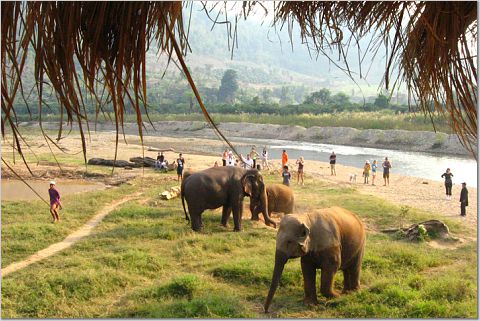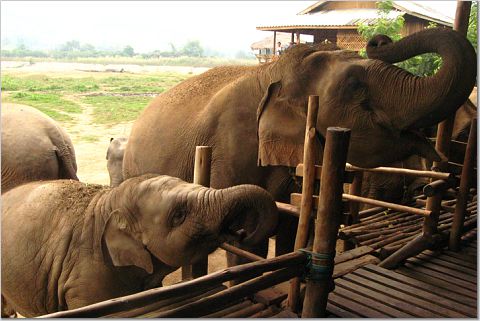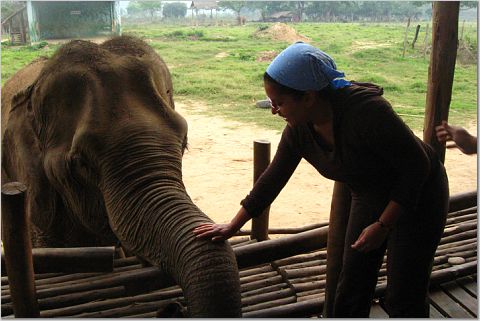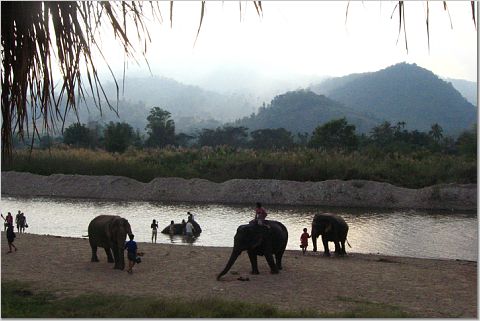Elephant Nature Park, Thailand – Photos
http://www.elephantnaturepark.org/
The Elephant Nature Park was started up in 1999 by a woman named Lek who made it her life’s work to rescue and take care abused elephants. The success of the park can be attributed to an incredible marketing campaign – The Elephant Nature Park has been covered by National Geographic, Animal Planet, and the BBC among others. Stars including Meg Ryan have come here. The result of all this publicity is that Elephant Nature Park has received donations from very generous donors and can count on Western Volunteers to do much of the labour (paying volunteers I should add). The park is a nature haven, not only do they have Elephants, there are also dogs, goats, and water buffalo, all living together and cared for in this park.
We arrived at the park at about 9:30 am and had about 15 minutes to meet the elephants – the 31 elephants are here due to many different reasons: victims of landmines, inflicted blindness, drugging, poaching, car accidents, or sometimes just general neglect. At about 10 am they were ready for the 1st feeding of the elephants – we ended up feeding Lilly, an elephant who had been hooked on amphetamines (her previous owner had fed her drugs to keep her working through fatigue).
Lilly is a docile elephant who eats slower than most – we fed her pineapples, sugar cane, and bananas, while patting her huge trunk. The Park has profiles on each elephant which are worth looking at; elephants are different, just like people, with different likes and dislikes, different temperements and fears. Lilly for example is afraid of other animals, especially dogs…
After the feedings, it was time to bring the elephants down to the river for bathing time.
After bathing, the elephants have “fun time” in the mud pool and then run around jumping and pushing each other. In many ways elephants are just like dogs, the only difference being that they can end up crushing you in their playfullness…
We had lunch, were shown a video (about the history and role of elephants in Thai culture, and highlighting the accomplishments of the Elephant Nature Park), then repeated the same routine in the afternoon – once more feeding Lilly (who we got quite fond of), then watching the elephants bathing in the river.
At 5 pm it was time to go – the elephants were back in their kralls (they walk there by themselves, familiar with their daily routine), and the goats and water buffalo were likewise back in their enclosures. As we left we saw the dogs getting fed by the volunteers.
It was an expensive tour (6500 baht, or about $200, including pick-up from Chiang Dao). It’s easy to criticize Elephant Nature park for it’s success – one would hope that other Elephant parks and camps get their fair share of money for their elephants. Do poor locals resent the fact that foreigners pour money and effort in helping wild animals over people? How about the historical role of the elephant as workers – here they are getting pampered by rich Western tourists. It raises a lot of questions. The park re-iterates that money goes to educating the local population and that it funds different projects in villages. But the bottom line is that Elephant Nature Park has worked tirelessly doing good in the world, helping not only elephants but also other animals and, we hope, the local population through programs and by providing employment opportunities. You can’t really criticize that. There’s no doubt that without Lek that elephants like Lilly would be dead; we left feeling good that we had at least contributed a little to a good cause.
Tags: PHOTOS, Thailand









Leave a Reply